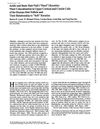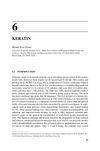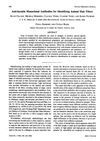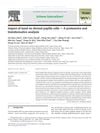TLDR A new method quickly extracts and identifies proteins from hair and other keratin sources.
The study developed a rapid extraction procedure for human hair proteins using thiourea and urea with a reductant, effectively isolating proteins from the hair cortex. The extracted proteins included hard alpha-keratins (40-60 kDa), matrix proteins (12-18 kDa), and minor components (110-115 kDa and 125-135 kDa) as identified by SDS-PAGE. Phosphorylation analysis revealed serine phosphorylation in both alpha-keratins and matrix proteins, and threonine phosphorylation in alpha-keratins. The method was also effective for extracting proteins from wool, chicken feathers, rat hair, and human nails.
235 citations
,
July 1999 in “Journal of biological chemistry/The Journal of biological chemistry” Human hair is made up of different keratins, some strong and some weak, with specific types appearing at various stages of hair growth.
 356 citations
,
December 1986 in “The journal of cell biology/The Journal of cell biology”
356 citations
,
December 1986 in “The journal of cell biology/The Journal of cell biology” Hair and nail cells share similar proteins, indicating a common differentiation pathway.
32 citations
,
October 1985 in “Annals of the New York Academy of Sciences”
 6 citations
,
October 2016
6 citations
,
October 2016 Understanding how keratin structures in hair are arranged and interact is key for creating methods to extract and purify them.
 8 citations
,
May 2004 in “Textile Research Journal”
8 citations
,
May 2004 in “Textile Research Journal” Scientists made antibodies to tell cashmere and wool apart, which could improve how we identify animal fibers.
 14 citations
,
October 2016 in “Psychoneuroendocrinology”
14 citations
,
October 2016 in “Psychoneuroendocrinology” Finasteride affects brain processes related to neurotransmission and metabolism, potentially helping with neuropsychiatric conditions.
 February 2023 in “Molecules”
February 2023 in “Molecules” Cactus extract from Notocactus ottonis may help promote hair growth.
 9 citations
,
October 2011 in “Journal of proteomics”
9 citations
,
October 2011 in “Journal of proteomics” Taxol damages hair growth cells, causing hair loss.





